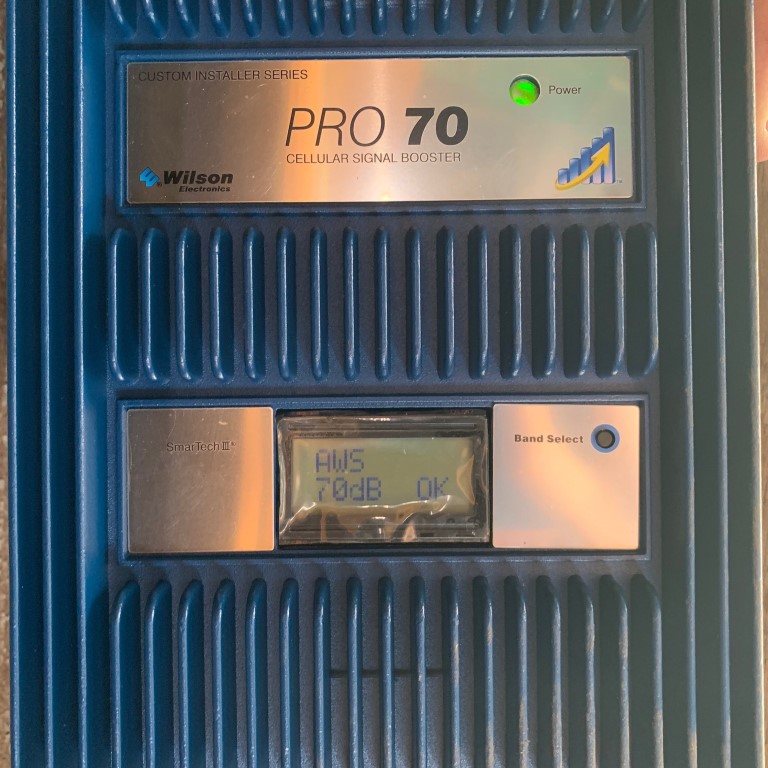
REVIEW – A few years ago, my brother fell while in a rural forest in upstate New York. He totally shattered one of his vertebrae and spent nine months in a full-body cast recovering. When he fell, it was snowy, dark and cold. By some miracle, he located his cell phone, got a tiny signal and called for help. If he hadn’t located his phone, things could have ended much differently. Equipped with this realization, I wanted to see what Wilson’s Pro-series Cellular Boosters could do to alleviate my brother’s weak cell signal woes in his sparsely covered valley farm home.
What is it?
Wilson’s Pro-70 is a cellular signal booster and antenna pair which acts as a transceiver, amplifying signals in an area with weak coverage.
What’s in the box?
List contents – you can remove this heading and section if it doesn’t apply to your review.
- Wilson Pro 70 Amplifier with LCD Display
- Wilson Yagi Directional Outside Antenna
- Wilson Panel Inside Antenna
- 75′ Black Ultra Low Loss Cable (952375)
- 60′ Black Ultra Low Loss Cable (952360)
- Lightning Protector
- 2′ Black Ultra Low Loss Cable
- AC Power Supply
- Installation Guide
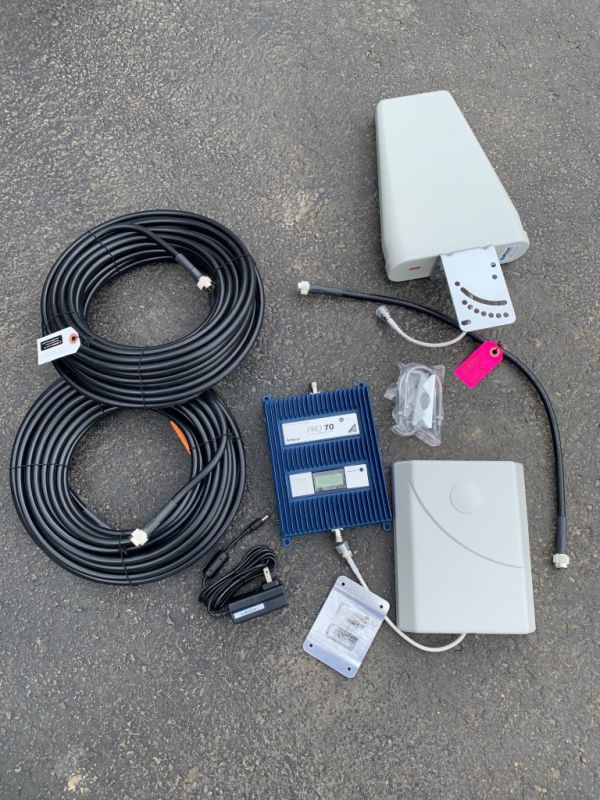
Hardware specs
- Band 4,5,12,13W (700, 850, 1700 and 2100MHz)
- Max Gain 70dB
- 50 Ohm Impedance
- 12 volt, 3 Amp DC power
- 15 x 6 x 8.75” booster dimensions
- 2.78 lbs booster weight

Design and features
The kit arrived in multiple boxes inside a larger box. Everything needed (almost) for installation was included. The booster has only three connectors, one for power, one the receiving antenna and one for the home antenna.
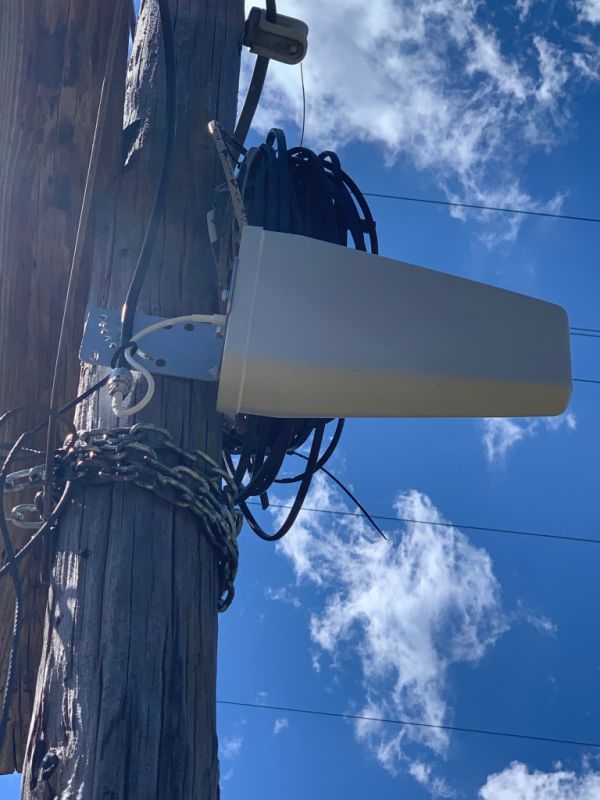
The booster is equipped with an LCD screen and single button to toggle between cellular frequencies, checking signal strength and for issues. A single LED indicates if there are any issues or if everything is working properly.
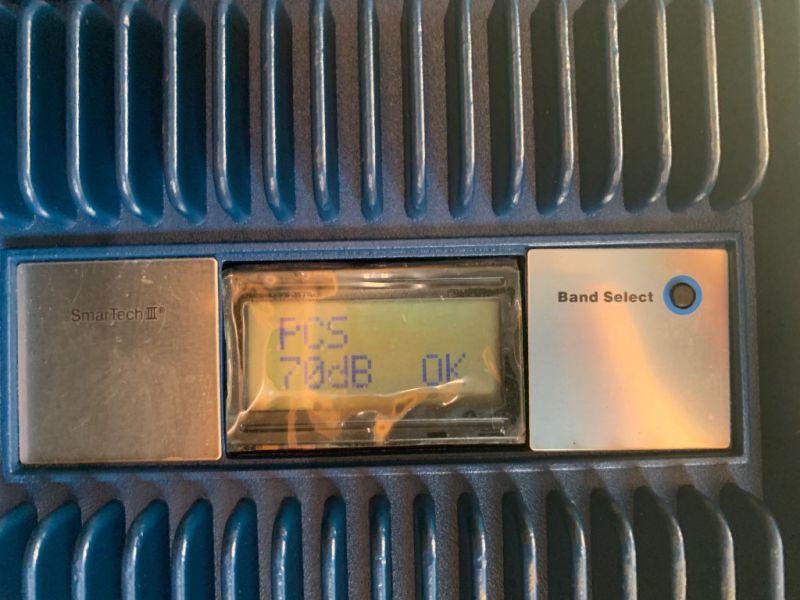
Setup
We pulled all of the parts from their cardboard wombs and connected everything together for testing. Because my brother’s farm has several buildings, we elected to initially put the equipment in a small tractor barn. We plugged in all of the parts, plugged in the booster and waited a few seconds. Using the built-in strength meter’ we were able to get an average of 69dB of the signal across all bands. The antennas needed to be separated to keep from talking to each other, but plenty of cable is included.
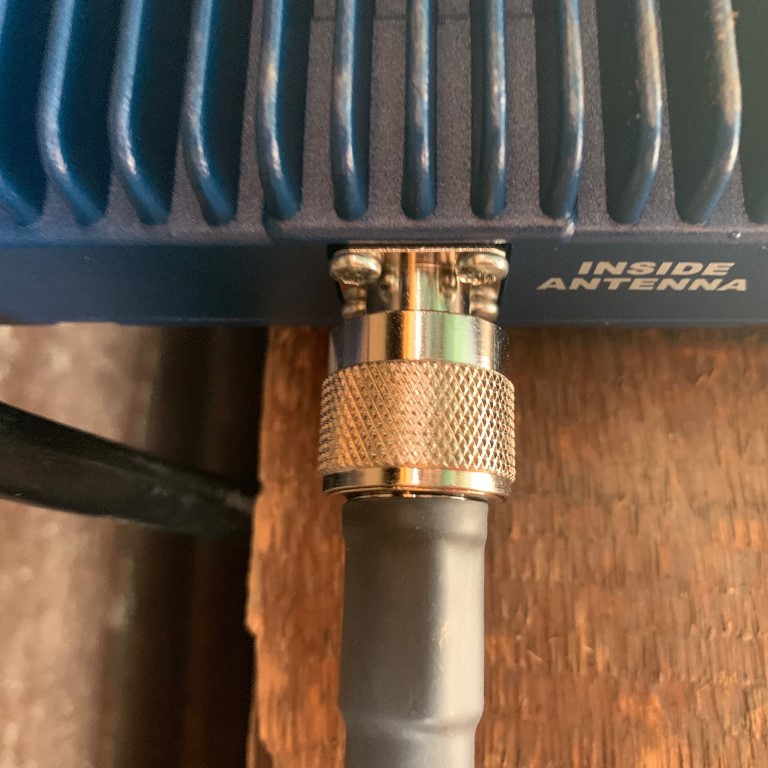
Instantly, I went from no signal (no bars) to a very usable and stable signal. I was amazed because the transceiver required no tweaking, no adjustments, and no customization. It just worked – magic!
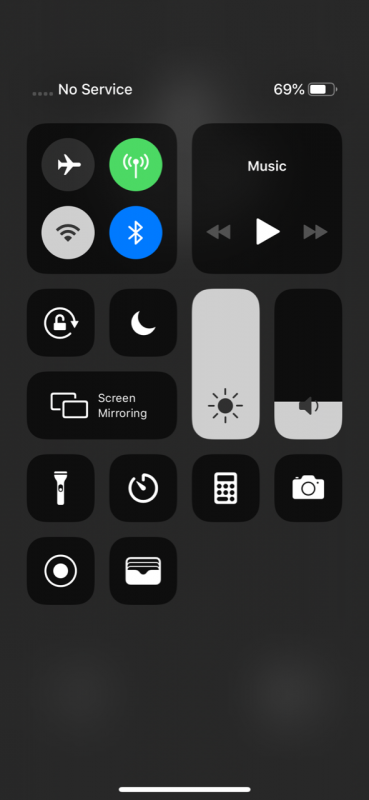
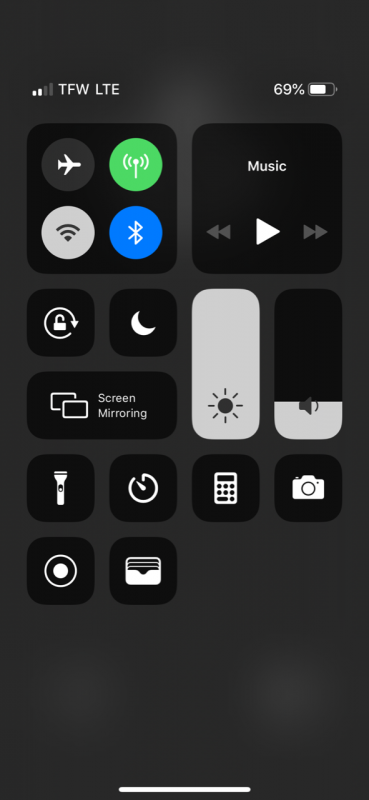
I made a few calls and visited a few web sites to verify I had gone from signal-nada, to full-speed LTE signal.
Since everything tested ok, we uncoiled the cables and mounted the antenna on a pole between the house and barn, attached the lightning protection adapter, routed the equipment and were finished. We needed to provide a few zip-ties to secure the cables and a ground wire to connect the lightning suppressor to an existing ground rod, but other than that, everything needed is in the box. It should be noted that the sending and receiving antennas can’t be pointed at each other or the system can experience problems.
Performance
Playing the “can you hear me now” game, I walked around the property and was shocked at the area of coverage I had. Of course, there was significantly less signal inside structures, but still, enough to maintain a connection except in the furthest reaches of the house. Mind you, the equipment was placed in a building about 50 feet from the main structure. My brother and I have different carriers and both received a dramatic increase in cellular reception. Again, prior to installing, I had zero cellular signal in or near my brother’s home.
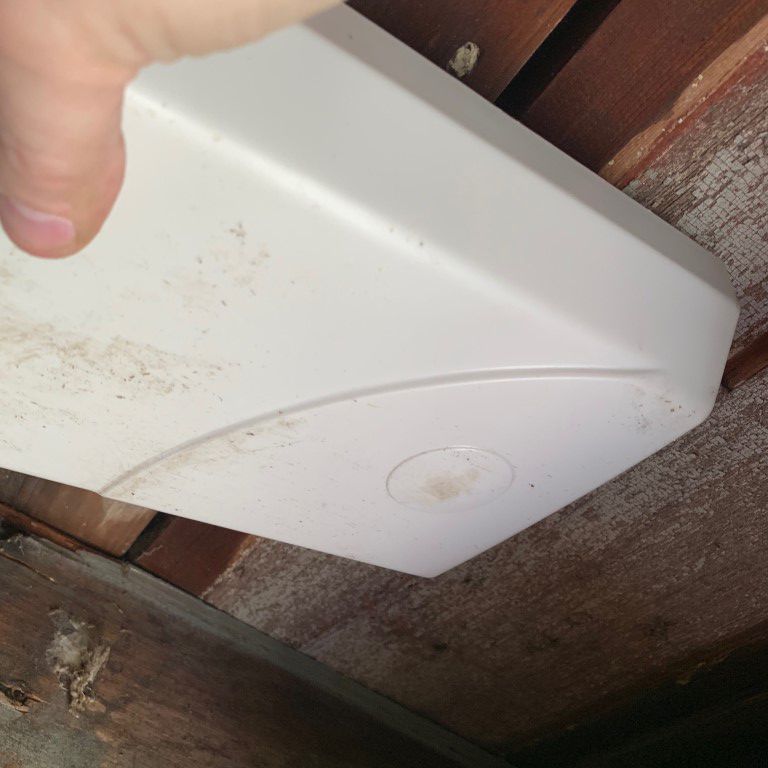
What I like
- Almost everything needed for installation is included
- Virtually no set-up needed other than pointing the antennas
- Solid performance
What needs to be improved
- Nothing
Final thoughts
In my brother’s case, a cell phone may have saved his life. I’ll never underestimate the value of a solid cellular connection. The Wilson Pro 70 Cellular Booster is a solid, easy to install remedy for weak signal areas. While it’s not a magical solution to rebroadcast LTE to your “back 40” acres of your property, when properly sized (Wilson sells many different sizes) and installed, it will alleviate many issues in home (or in my case, farm) cellular reception.
Price: $899.99
Where to buy: Wilson Amplifier Pro 70
Source: The sample of this product was provided by Wilson Amplifiers



Gadgeteer Comment Policy - Please read before commenting
Great post. Thanks for sharing. For somebody not that tech savvy, is it still doable or do we need to find an installer?
If you lack basic mechanical skills or do not like heights, find an installer. Note that you need to be able to receive some cellular signal. I’ve sold and installed a good number of Wilson amps. My simple rule of thumb is that if you have some signal on your phone from someplace outside such as your rooftop, then you are an excellent candidate for a Wilson amp to get in building cell coverage.
I have an older model 70 without the LED display. I used antennasearch.com to find nearest 4G. There are no towers near me but there’s a bunch of 4G antennas that the railroad uses. Went from 1 shaky bar to 2-4 bars and a decent signal most of the time.
In the list of contents, you forgot to delete the instructional sentence.
Right i had a set up similar. I live remote wa 40kms from a operating minesite. The minesite has a operating telstra tower.
When we turned our setup on it lasted 8 weeks. Then the telstra tower slowly cut our signal out. Eventually we had none. We where using telstra phones ourselves.
We rang telstra got to speak with someone who knew there stuff. He said because our setup was not an approved telstra antenna and box. It will kill it.
We now use a telstra celfi looks very similar to your pics. We know have 5 full bars constantly. One aetup is about $1500. So we now have 2. One in car. One in van.
Be careful. As telstra is in most remote places in australia
Interesting review (although as one commenter noted this amplifier has to have a cellular signal to amplify). But you didn’t address your brother’s terrible accident. Anyone who goes alone into a remote area for whatever reason should consider taking a satellite phone or emergency beacon. The beacon doesn’t support voice but it does send an emergency signal with your lat. and long. coordinates. The price/safety trade-off is a personal one depending on one’s circumstances.
My husband and I are considering this for our home. We live in a pretty rural area and with Verizon have 1-2 bars of signal. We also have terrible internet and only one option for it, so are thinking we can use this to booost cell signal and use our phones or a dedicated hotspot instead of our slow unreliable 12MB DSL with Windstream. Any thoughts?